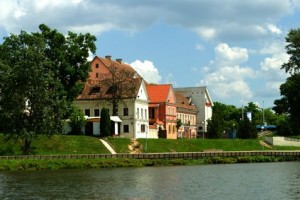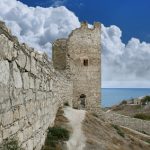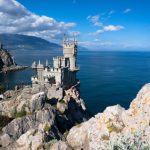 John M. Edwards researches a future trip to a country he suspects doesn’t really exist. . . .
John M. Edwards researches a future trip to a country he suspects doesn’t really exist. . . .
I’ve never been there, and neither have you.
The imaginary kingdom of Belarus, way off the beaten track, so far away in fact that no one ever seems to find it, belongs more to the world of fictionalized Tintin comics than the grip of postcardy Paid Advertisements.
Even asking former communist expats from the various SSRs how to get there usually comes up with no evidentiary goods or services. Only blank stares.
“It lies somewhere near the Black Sea, or maybe The Caspian?” a Central Asian kosher-and-hallal hotdog-vender efendi in Central Park attempts an explanation. But he feels like a braindead on the subject of geography, since he is from one of “The Stans,” and still prefers Marx over Mohammed. “Wait, I think White and Black Russians are from there!”
Also once known as “Byelorussia,” Belarus (“bela” = “white” in the Russian language) is almost impossible to find on a map. Bordered by five different countries (Latvia, Lithuania, Poland, Russia, and Ukraine), this lost land is known more for its bravado than its borscht. Over eighty percent of its people are Eastern Orthodox, but with the advent of the “Orange Revolution” in nearby Ukraine (now the sight of mass demonstrations), many of the populace act like influential secular Protestants. Still, the criminally negligent oligarchs and pitchfork-wielding serfs take insults and curses seriously, which often abrogate both friendships and families, and astonishingly turn into internecine conflicts and blood feuds.
Here, they say, whomever they may be, that one must be careful to avoid “The Evil Eye.” Also, this is obviously vampire country, so one would indeed be wise to pack a Gideon’s, a crucifix, and some onions into your backpack before setting out on this godforsaken medieval pilgrimage into the primeval.
After all, what could possibly be more humiliating than being snuffed out by a nosferatu?
According to my CIA handbook, THE WORLD FACTBOOK, Belarus is “slightly smaller than Kansas” and “completely landlocked.” Minsk, its capital, I had vaguely heard of as a setting for Russian folksongs and Gothic fairytales illustrated by amateur artists aping Marc Chagall.
Risking a Google Search, “Pinsk,” comes up with a darkly absurd book set in that mythical Belarussian demesne by Artur Yorinks called “A Day in Pinsk.” This is a tall tale about a shoe salesman named Irv Irving, who one morning literally loses his head, but his wife, Irma, fashions a temporary noggin for him out of an old pillowcase and some socks, with the highlight being when Irv tries to eat a bagel with no head.
The moral: I don’t know; you tell me.
(Note: Bagels were originally invented by the Germans to feed the poor!)
With almost ten million people, Belarus seemingly prefers minding its own business since gaining independence from Mother Russia in 1991. One of the fall guys for the Chernobyl Disaster, Belarus is right on the border with “The Ukraine” (now known simply as “Ukraine”).
With a dwindling supply of Eurotrash Hotbods–most of whom Go West the minute anybody important lays an eye or a hand on them–Belarus’s largely male dominated society left over still burns with revenge for their own kind, and perhaps because of nearby Russian leader Putin’s draconian measures against gay people, has an amazingly low rate of AIDS victims (0.5 %).
Once the victim of a steamrolling glacier, Belarus is as flat as a Royal Society topographical map, but it does have something more important than the authoritarian Big Brother still watching over them: over 11,000 lakes to recommend it.
Christ almighty, but that is a long way away just to go swimming. . . .
I don’t know, maybe I’ll visit there someday?
Nah!





Well, you certainly do make it sound fascinating…hmmm.
John has a way with words to make even places he has never visited sound intriguing!
I’ve been to Belarus, intriguing city but no imaginary kingdom